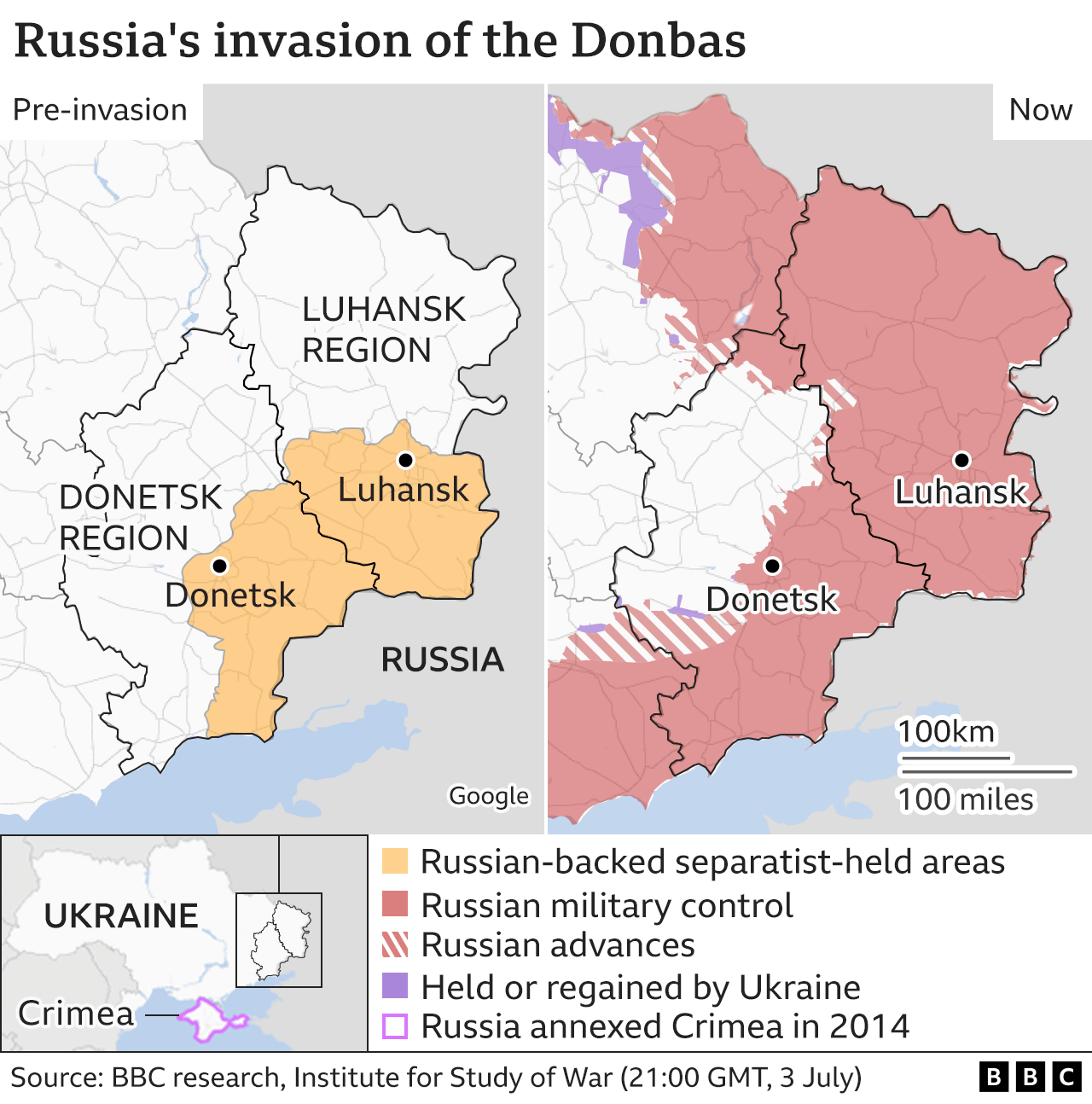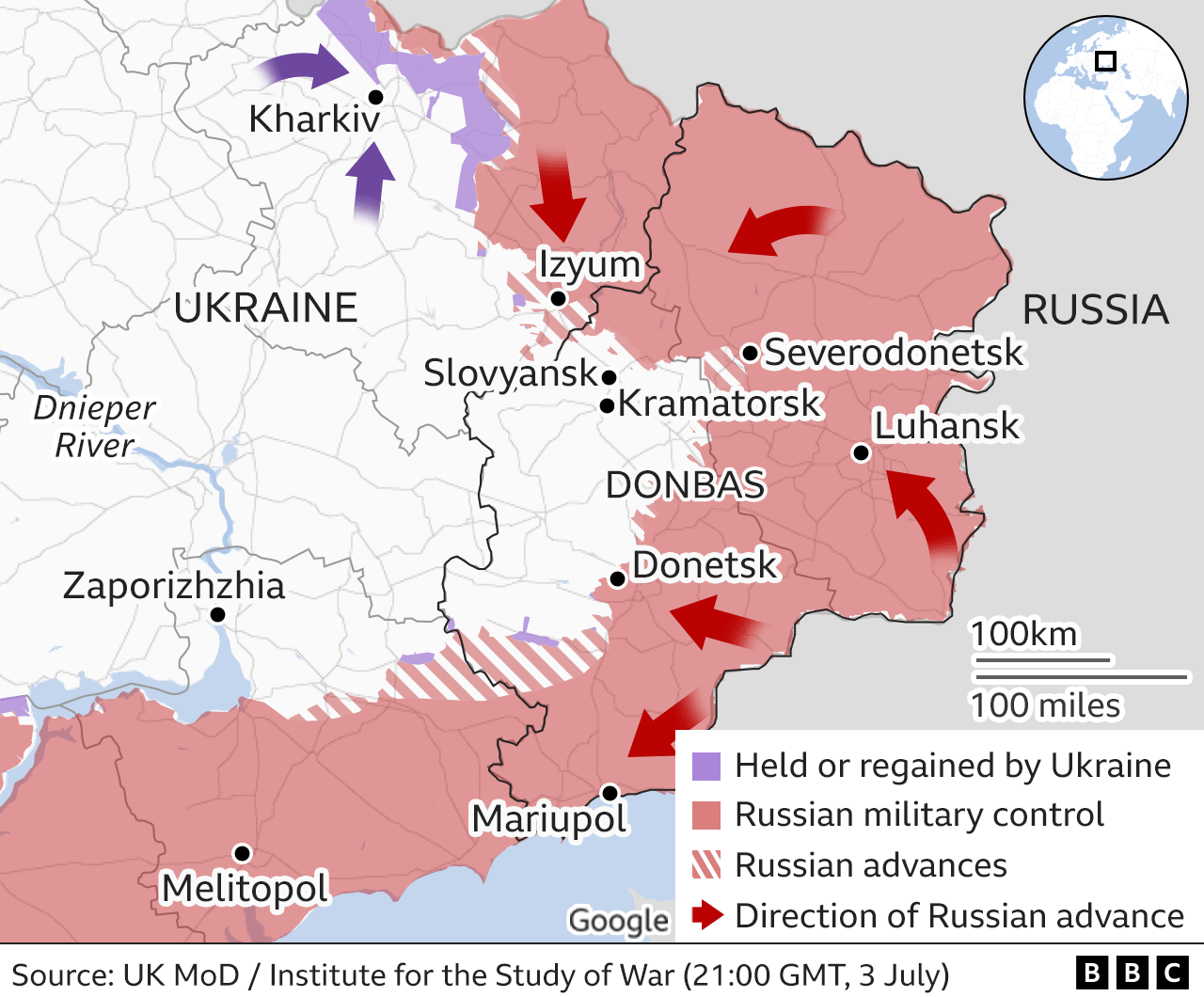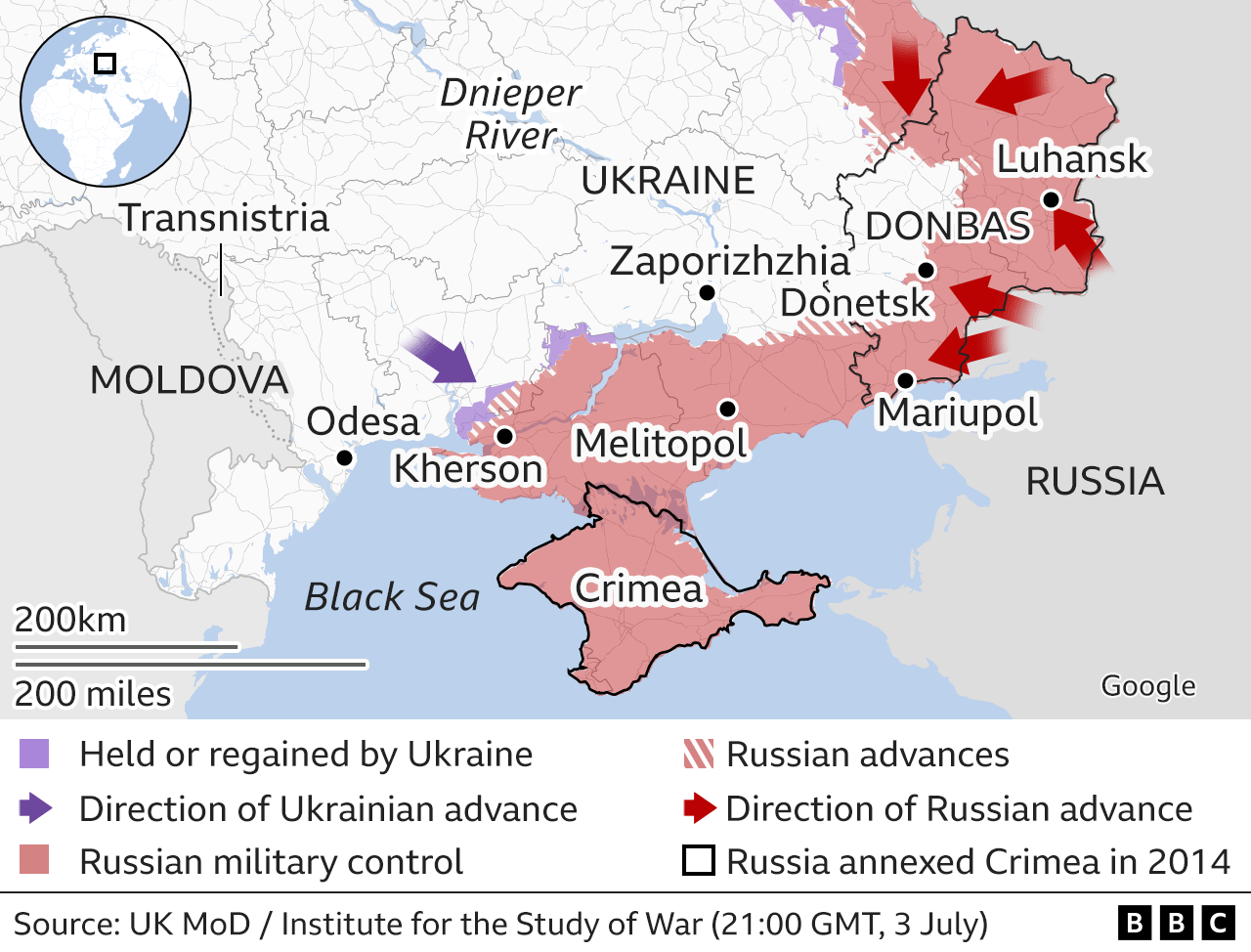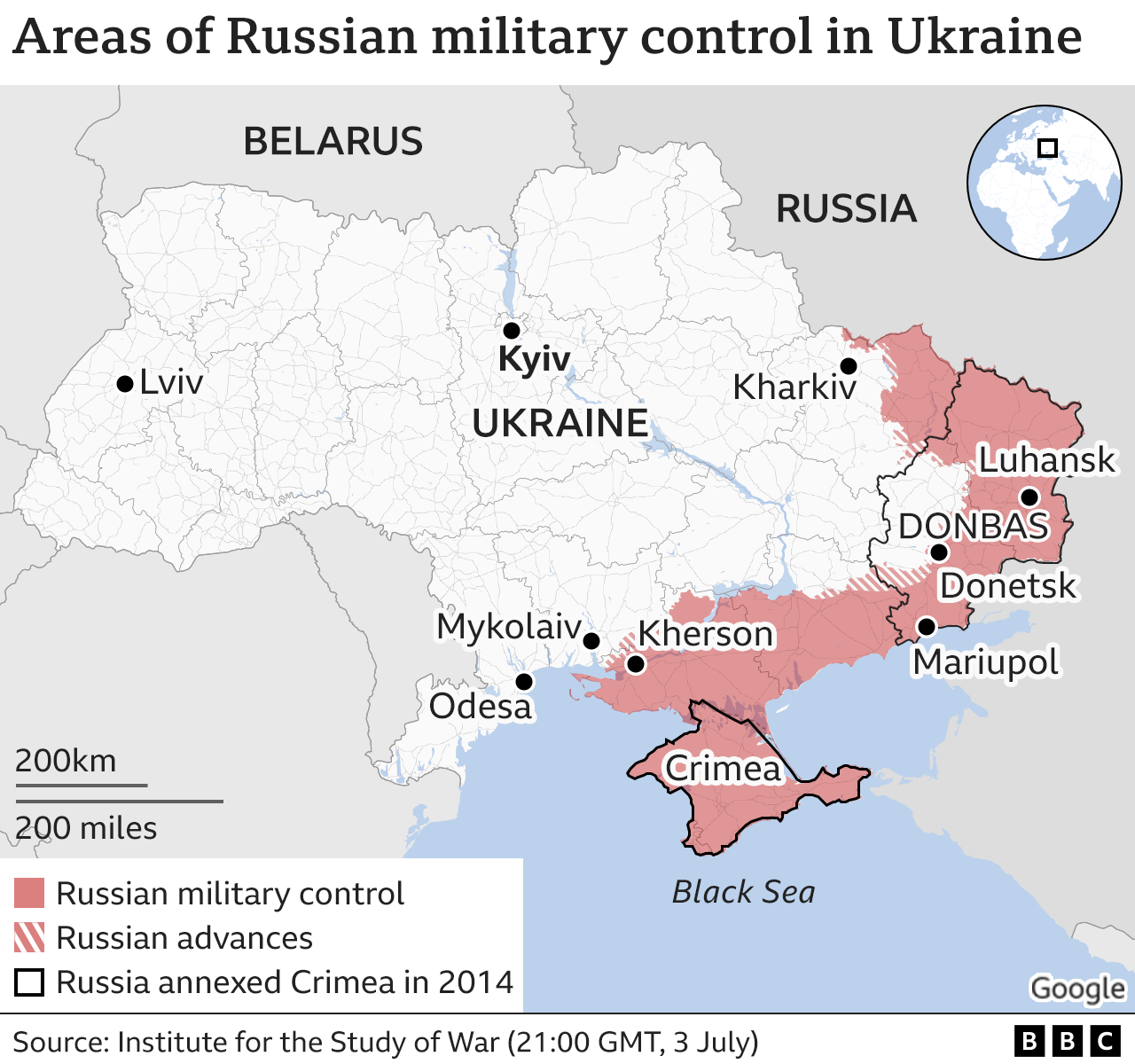BBC News 4 July 2022 - by the Visual Journalism Team
Heavy fighting continues in east Ukraine, with Russia slowly pushing forwards in key locations.
Here are the latest developments:
Russia pushing forward
Over the weekend Russia captured the city of Lysychansk and now controls the whole Luhansk region.
Ukrainian forces confirmed that they had withdrawn from Lysychansk on Sunday.
Russia's latest advance follows the recent capture of the nearby town of Severodonetsk.
President Volodymyr Zelensky has pledged that Ukrainian forces will return to retake Lysychansk "thanks to the increase in the supply of modern weapons".
Russian officials have said their forces are fighting for the "complete liberation" of the Donbas, which broadly refers to Ukraine's eastern regions of Donetsk and Luhansk, where Russian-backed separatists held significant territory before the invasion.
Following the capture of Lysychansk and the Luhansk region, "Russia's focus will now almost certainly switch to capturing [the region of] Donetsk" according to the UK Ministry of Defence (MoD).
Further west, Ukrainian forces are continuing to hold back Russian attacks towards Slovyansk from the direction of Izyum, according to the Institute for the Study of War (ISW).
Russian forces have seen big losses
Russian forces have suffered heavy losses since the invasion began.
The MoD says Russia is likely to have suffered devastating losses among its middle and junior ranking officers. It says these losses are likely to contribute to a loss of morale and poor discipline among lower ranks.
Significant quantities of Russian weaponry have also been destroyed.
As a result, Russia has tried to combine some heavily depleted units, forming what some analysts have called 'Frankenstein forces' to fight in the east.
Further north, Russian units are vying for control of positions north of Kharkiv and attempting to protect ground lines of communication to the Donbas, according to the ISW.
Ukrainian military officials have stated that they intend to use the US-provided Himars rocket artillery systems in the area to target these lines of communication.
War in Ukraine: More coverage
- FRONT LINE: Welsh journalist shares photos of Ukraine horrors
- WEAPONS: What weapons are being supplied to Ukraine?
- READ MORE: Full coverage of the crisis
Russia targets full control of south
Russian forces initially made rapid gains in the south, with their main objective being the creation of a land corridor between Crimea, which it annexed in 2014, and areas held by Russian-backed separatists in Donetsk and Luhansk.
But strong resistance from Ukrainian forces near Mykolaiv in the west and in Mariupol significantly slowed Russian advances.
Russia is now fully in control of the port city of Mariupol, after a siege lasting more than two months came to an end on 20 May.
Russian troops have continued to shell Ukrainian positions across the southern regions of Zaporizhia, Kherson, Mykolaiv and Dnipropetrovsk.
According to the ISW, Russia's current priority in the south is to halt Ukrainian counterattacks, which have succeeded in regaining some territory in recent weeks.
To the west, Russia had aimed to take control of Odesa and cut off Ukraine's access to the Black Sea, but its forces were blocked by a staunch defence in Mykolaiv and forced back towards Kherson by a Ukrainian counteroffensive in March.
Russia was initially successful in holding on to Snake Island in the Black Sea and using air defences stationed there to protect Russian naval vessels blockading the Ukrainian coast and hindering Ukraine's maritime trade.
However, Russia announced the withdrawal of its forces from the island on 30 June. Ukraine said Russian troops had been forced out by successful artillery strikes. Russia said the withdrawal was a "gesture of goodwill."
Russia invaded Ukraine on 24 February, but Ukrainian forces retook large areas around Kyiv in early April after Russia abandoned its push towards the capital.
Areas in the west of the country, including Lviv, have seen missile attacks but no attempt by Russian forces to take and occupy ground.
By David Brown, Bella Hurrell, Dominic Bailey, Mike Hills, Lucy Rodgers, Paul Sargeant, Alison Trowsdale, Tural Ahmedzade, Mark Bryson, Zoe Bartholomew, Sean Willmott, Sana Dionysiou, Joy Roxas, Gerry Fletcher, Jana Tauschinsk, Debie Loizou, Simon Martin and Prina Shah.
About these maps
To indicate which parts of Ukraine are under control by Russian troops we are using daily assessments published by the Institute for the Study of War with the American Enterprise Institute's Critical Threats Project.
To show key areas where advances are taking place we are also using daily updates from the UK Ministry of Defence and BBC research.
The situation in Ukraine is fast moving and it is likely there will be times when there have been changes not reflected in the maps.






